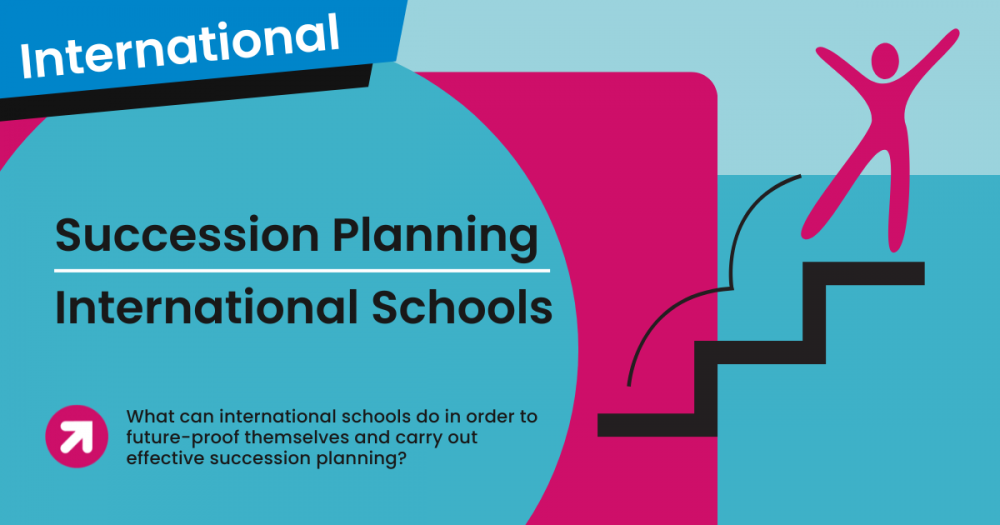Succession Planning for International Schools

Succession Planning for International Schools

Written by Jamie Ganley | Head of International
Jamie has 8 years of experience supporting schools with various aspects of recruitment & retention. As Head of International Partnerships at Best Practice Network, he oversees a network of 1,500+ learners from 75+ Countries.
What is the issue with succession planning?
Succession planning is often a topic discussed at termly Senior Leadership meetings but rarely is it carried out effectively. This is especially so at International Schools where turnover of staff is a much higher percentage than its UK counterparts. Simon Sinek famously wrote “The greatest contribution of a leader is to make other leaders” so here we are going to look at what helps make effective succession planning.
So what can you do?
Below I have outlined 5 key steps that will help with your succession planning discussions:
Consider the succession planning of all your leadership roles
Commonly only Senior Leadership positions have succession planning conversations. But if your Head of Maths becomes the new Assistant Head, who becomes the new Head of Maths? If your KS4 Lead becomes the Head of Maths, who then becomes the KS4 Lead? It’s important to identify future leaders early in the process that can fulfil those middle leader roles as they become available through promotions.
Build appropriate internal training plans
How many people do you know that have been promoted into roles that they feel unqualified or underprepared for? Alongside each role, there should be an Induction Plan which is provided at the time a colleague steps into a new role, even if they are coming from another internal position. Better still is to tailor this to the needs of the individual, focusing on core areas of development. This could also including peer coaching with another internal staff member or someone in a similar role at another school.
Formal training opportunities
Internal training schemes are great, but formally recognised qualifications should be used hand in hand with this. Developing leaders by accessing CPD outside of the organisation means they can develop their own strategies and bring new ideas to the organisation. Distance learning Master’s qualifications or our own NPQs (National Professional Qualifications) are used by schools committed to succession planning.
Generate an external network of potential hires
As nice as it is to have internal staff to fulfil positions that become available. This will not always be the case, especially in specialist and hard to fill roles. For that reason, it is always beneficial to build an unofficial pool of education professionals that could take up specific roles in the future. This then offers the chance for a head start before advertising to the public, reducing any potential periods of uncertainty.
Build strong structures
The school planning and foundations of succession planning needs to be built on clear procedures, efficient policies and pragmatic, realistic systems in place. Succession planning needs to be more than one person's job and needs to be bought into by a collective of leaders within the organisation. An individual cannot be the only one involved in the process because that often leads to turmoil once they, in turn, leave.
Closing thoughts
It is worth remembering that one solution isn't the be-all and end-all for solving your succession planning. The steps listed above need to implemented in combination with each other to future-proof your school.
Next Steps
If you would like to get started with introducing NPQs to your international school or would simply like to find out more about how we can help with succession planning, please get in contact and email me via jamieganley@bestpracticenet.co.uk
View our International programmes


